Open House: $77,000 A Month Rental Shows Depth Of Hong Kong's Luxury Downturn
For top-end properties, finding a tenant at a time when global and Chinese firms alike are retrenching can be a challenge.

(Bloomberg) -- The deep freeze in what was the world’s hottest property market is prompting a significant shift in strategy by home owners in Hong Kong.
With prices approaching a seven-year low and sales the fewest in nearly three decades, many owners are choosing to rent out second or third properties rather than sell, hoping that the downturn will end when borrowing costs fall and China’s economy improves. Even the government has suspended residential land sales for the first time in 14 years due to poor demand.
For top-end properties, finding a tenant at a time when global and Chinese firms alike are retrenching can be a challenge. While rents broadly have risen from their pandemic lows, they remain below levels seen five years ago.
There are more than 20 properties on luxury real estate agency Landscope’s website listed for at least HK$300,000 ($38,400) a month. Among them are some unusual, prestigious homes.
Swire Group is looking to rent out a 5,480-square-foot semi-detached house on the Peak’s Severn Road, near the official homes of senior government officials, despite receiving permission to redevelop the building. Swire is asking HK$330,000 for the historic property, which includes five bedrooms, a private swimming pool and working fire place.
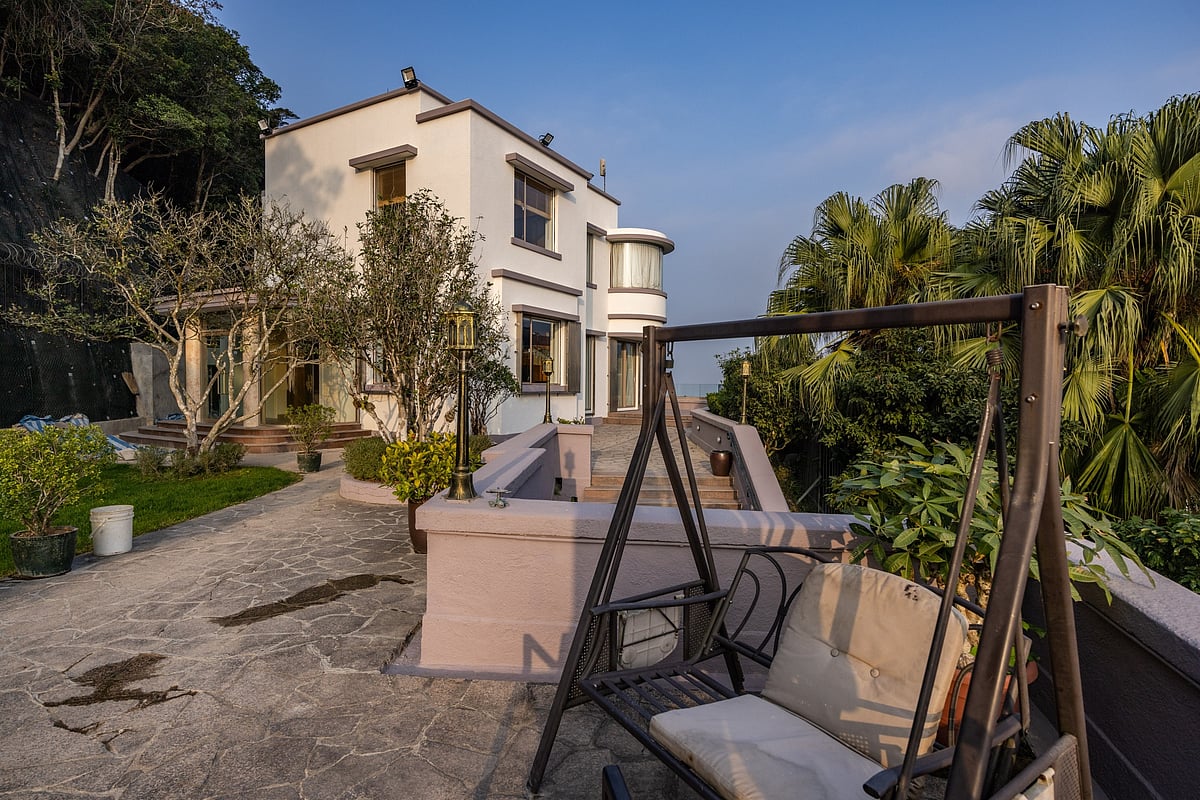
Another unique property available nearby is Chu Wan, a roughly 4,000-square-foot house close to the Peak Tram terminus. The former family home of powerful stockbroker and philanthropist Lee Woo Sing has been put on the market at HK$600,000 a month by his descendants following his death in 2022, aged 94.
The secluded three-story, four-bedroom property, reached via a steep drive accessed by Mount Austin Road, has a sizeable garden and views of both Victoria Harbour and the jungle-clad southern side of Hong Kong island. It has a grade-3 heritage listing.
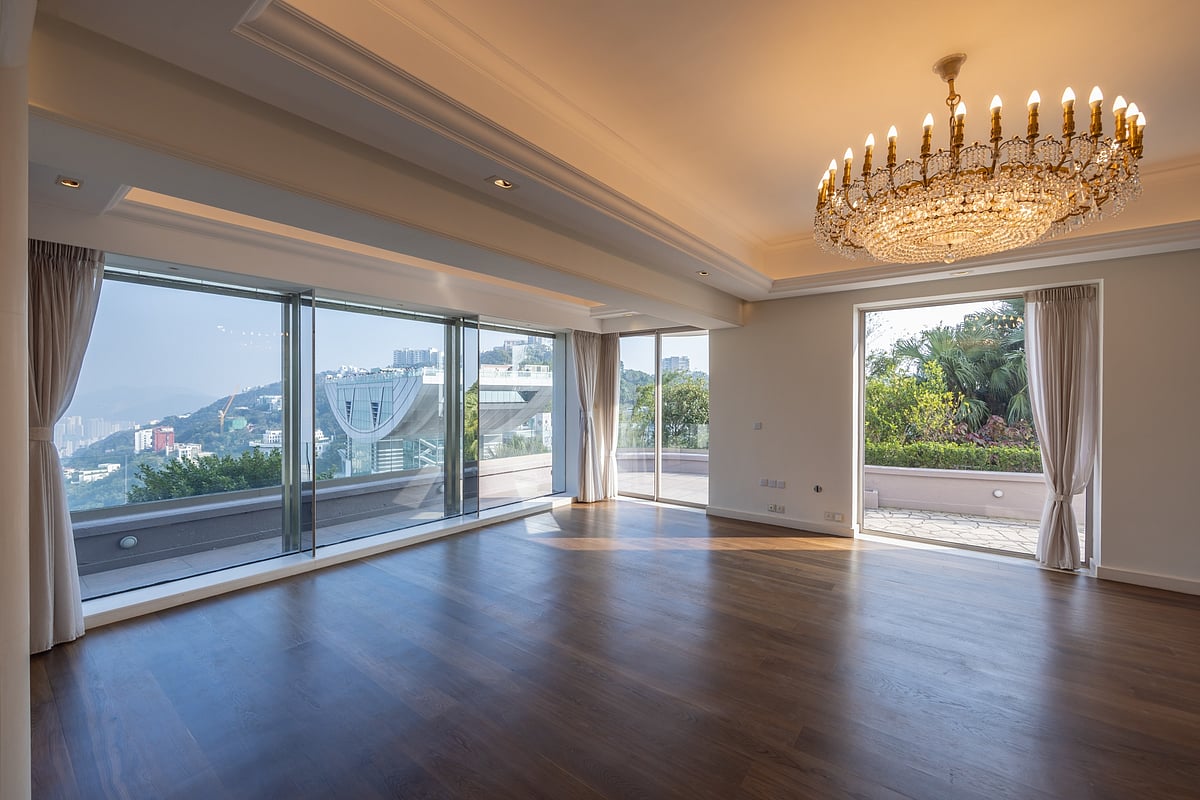
Single-lot houses like Chu Wan are “very rare” finds in the rental market, as they are often built for self use and usually remain under the ownership of their original occupants, says Landscope founder and CEO Keng Shing Koh.
The Peak, long considered the city’s most exclusive neighborhood, was a favored target by wealthy mainland Chinese buyers before President Xi Jinping’s crackdowns on private enterprise and an economic slowdown cut demand. In 2015, Alibaba Group Holding Ltd. co-founder Jack Ma paid $192 million for a house on Barker Road. The following year, mainland property tycoon Chen Hongtian broke records in Hong Kong spending $271 million on a Gough Hill Road home.
These days, the market is only going in one direction, weighed down by a flood of distressed properties.
Super luxury prices in Hong Kong have fallen by 25-30% in the past 18 months and may decline a further 15-20% over the next 12 months, Savills Plc said in a November report. Chen’s house, like many others bought by Chinese real estate moguls, was seized last year by a creditor after he fell into financial difficulties amid China’s property market slump.
"Mainland clients who were key buyers in the last decade are now lying low,” said Koh at Landscope, which is one of the agents for Chu Wan. “The market may only go up again when the economy in the region recovers."
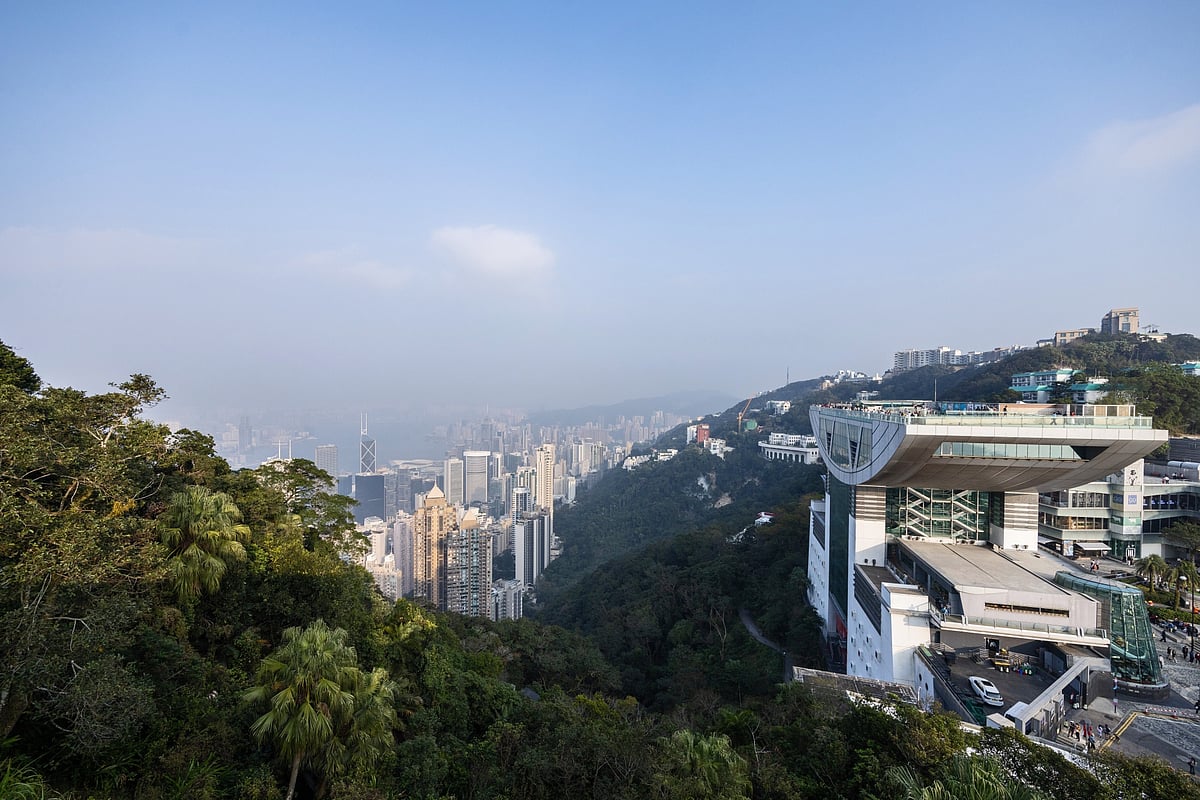
The story of Chu Wan, which means clouds emerging from a mountain, mirrors Hong Kong’s often turbulent development from a colonial trading port into a modern financial center. At the center are four men from very different backgrounds.
Lee bought the house in the summer of 1987 for HK$11 million. Months later the October stock market crash known as Black Monday caused him to nearly lose it.
Lee came to Hong Kong from Shanghai in 1950 after the Communist takeover and started out as a trader on the gold market floor for local firm Shun Loong. In 1958 he bought the firm with some friends and later expanded into equities and futures. Over the following decades, his firm grew as he rode a boom in stocks that saw the Hang Seng Index increase more than 2,400% from the start of 1970 to the peak in October 1987.
On Oct. 19 — Black Monday — the Hang Seng Index plunged 11%, helping fuel instability across global markets. The Dow Jones Industrial Average sank 23% when it opened later that day. Hong Kong’s stock exchange operator, seeking to avoid further panic selling, closed the market for the rest of the week — to little avail. The Hang Seng tumbled 33% when it reopened.
The losses ruined many in Hong Kong. To ensure the survival of Shun Loong, Lee sold his shareholdings and pledged his family’s properties as collateral. “I took it upon myself,” Lee said in a 2015 interview. “If it worked out, the company was saved. If it didn't, it's on me.”
The gamble paid off and the stock market recovered its losses several years later.
Chu Wan wasn’t the first property on the prominent site. Architect Alfred Bryer built a larger house there a century ago, naming it Quarndon after the village in Derbyshire, England where he was born in 1873. Bryer worked for Leigh & Orange, which is still a prominent firm, and was behind the construction of a number of homes on the Peak. His most famous work is the Edwardian-baroque main building of the University of Hong Kong, which was given monument status in 1984.

Initial residents of Quarndon reflected the cosmopolitan nature of the colony —and the impact of global events. According to juror list records, they included German merchants, before the First World War intervened. They were followed by managers of Russo-Asiatic Bank, Russia’s largest bank, before the Soviets nationalized it in 1918. That year Quarndon was purchased by a Jewish family called Raymond, land registry records show.
Edward Maurice Raymond was born in Bombay in 1886 and came to the city in 1902, where he became an influential figure in Hong Kong as a stockbroker and financier, rising to partner in several brokerages including Moxon & Taylor. At the time of Japan’s invasion in 1941, Raymond was chairman of one of the colony’s oldest tailors William Powell Ltd., as well as commissioner of St John’s Ambulance Brigade.
Given Quarndon’s location between a police station and a military barracks, Raymond’s home of some two decades was likely destroyed by Japanese shelling during the initial days of the attack. Whatever was left would be looted.
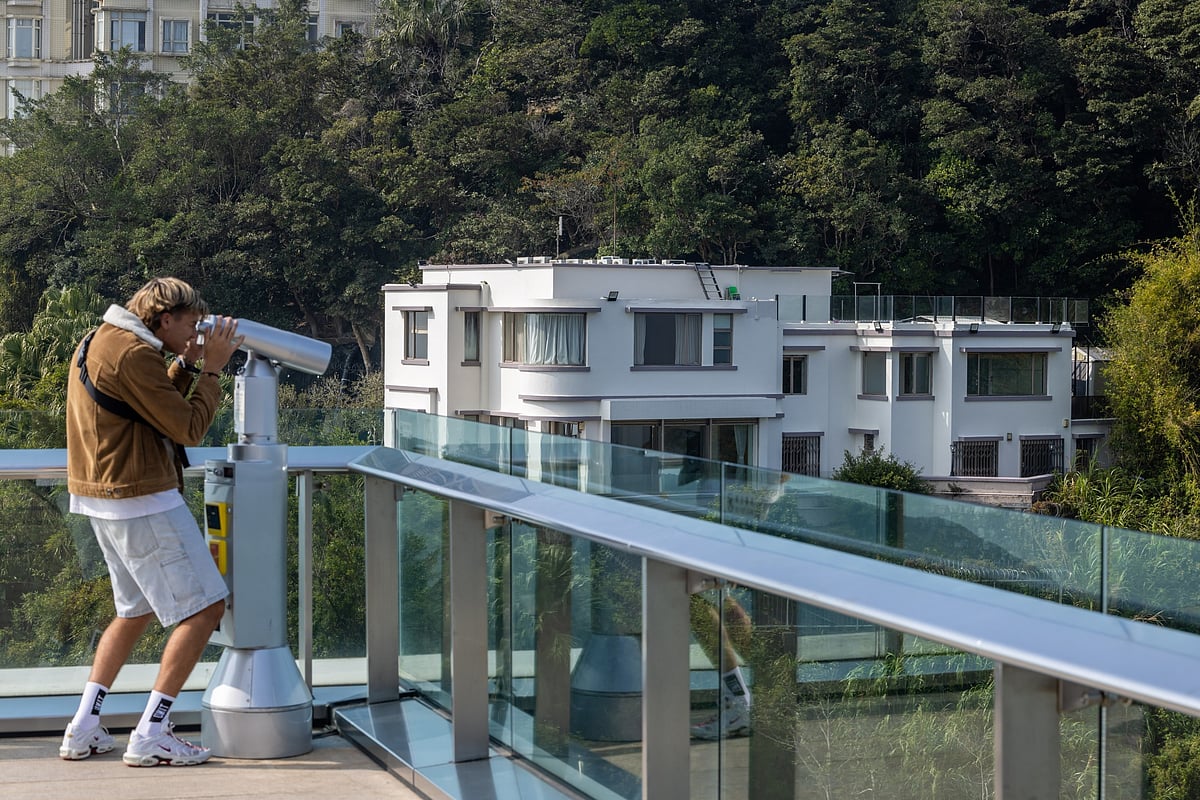
Raymond spent the rest of the war in Stanley internment camp on the island’s southern shore, along with about 3,000 other non-Chinese civilians. Inmates suffered from poor nutrition and illness. Some were tortured. He died three years after liberation in 1948 in Sydney, Australia, aged 61.
The same year, Mok Hing Cheong purchased a new house built to replace Quarndon for HK$44,000. The property was constructed by Tak Shing Investment Co., which bought the site for HK$40,000 in 1946. That came shortly after the government repealed a law effectively banning Chinese from living on the Peak, which was left in ruins by the war.
Not much is known about Mok, who was related to the Mok family which served as compradors [powerful middlemen] for Swire for three generations.
Yet a published poem about Mok at Chu Wan written by a friend gives a clue about his life. The poem describes Mok choosing to live in seclusion in the mountains and somberly reminiscing about his past life. His melancholy is dispelled by days spent watching clouds and swallows, reading books, drinking tea out of jade cups.
In 1978, Sabrina Au-Yang bought the property for HK$3.2 million, before it was sold to Lee nine years later for more than three times that amount.
Today, Chu Wan retains a slightly dated but smart appearance, both inside and out. The building’s exterior reflects the austerity of the time of its construction, with minimal ornamentation, although it’s been modernized since. The interior features plenty of the orange wood and gold fittings popular in the late 1980s and early 1990s.
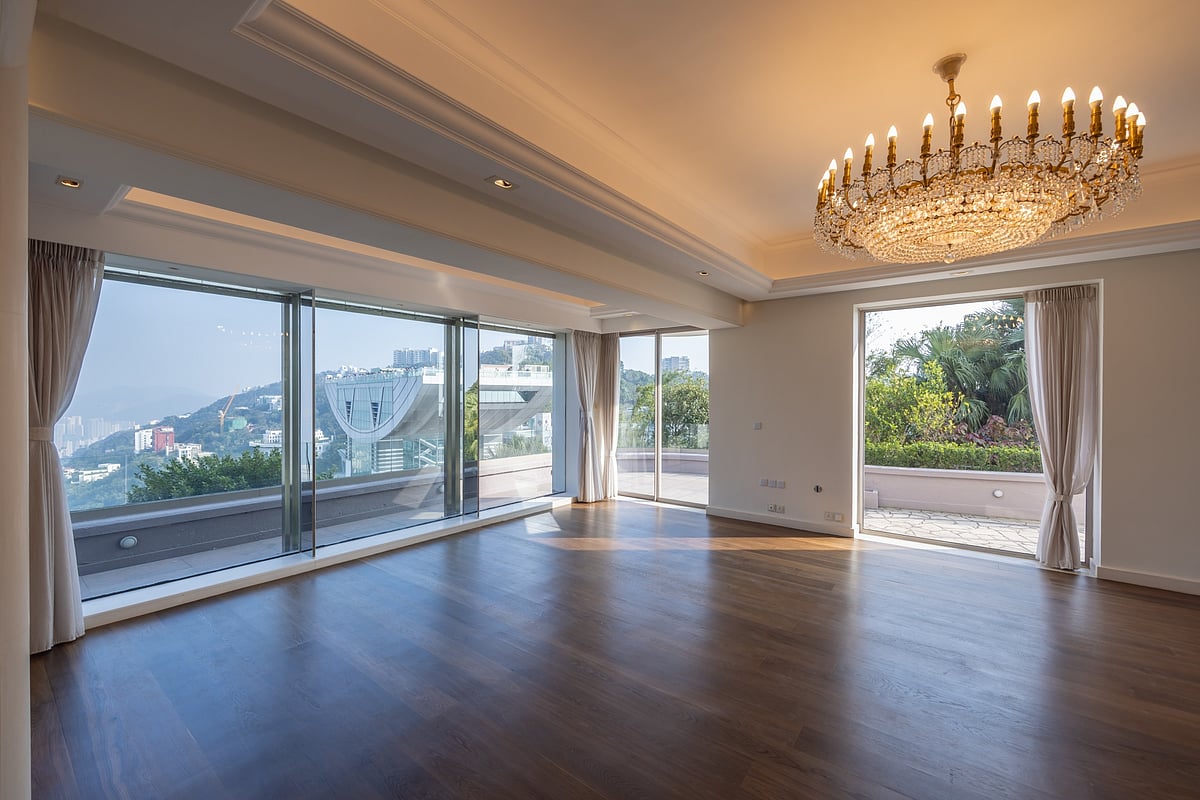
The centerpiece is an expansive living room with floor-to-ceiling windows that showcase views of the skyscrapers and the harbor below, as well as the tourists crammed on to the roof of Peak Tower that houses the tram terminus. The basic kitchen is designed for use by domestic staff.
Perhaps the highlight is the garden overlooking the mountainous spine of Hong Kong island and the sea either side.
From such a conquering position it’s not hard to imagine Bryer drawing up his plans for a grand mansion named after his place of birth; Raymond entertaining guests at the top of colonial society, little knowing his fate; Mok drinking tea and dreaming of a past life; Lee betting a fortune to save his firm.
Now anyone can inhabit this world, for a hefty sum.
--With assistance from Shawna Kwan and Shirley Zhao.
More stories like this are available on bloomberg.com
©2024 Bloomberg L.P.